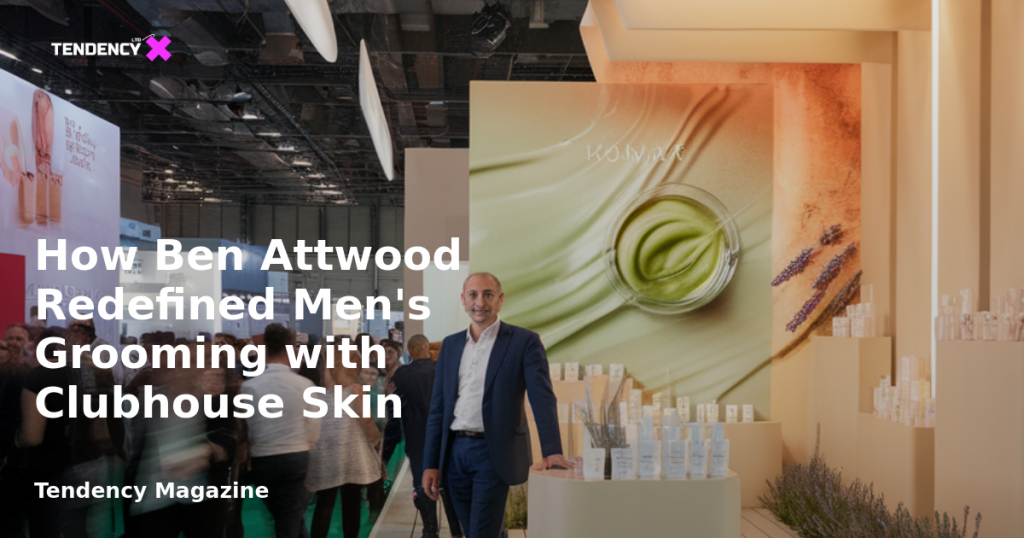How Ben Attwood Redefined Men’s Grooming with Clubhouse Skin

Table of Contents:
- Introduction
- Redefining Men’s Grooming with a Unique Perspective
- Collaborating with Labs for Innovative Product Development
- The Strategic Role of Design in Building a Brand
- Leveraging Transparency to Build a Community
- Conclusion
Redefining Men’s Grooming with a Unique Perspective
Ben Attwood launched Clubhouse Skin with a clear vision: to break away from the traditional stereotypes that dominate the men’s grooming industry. He noticed that many brands adhered to a formulaic approach, characterized by dark, hyper-masculine packaging and generic product names. Instead of following this trend, Ben opted for a design-forward approach, using softer colors and packaging that spoke to the modern man’s sensibilities.
His philosophy was simple yet profound. Men today are more conscious about their skincare routines and prefer natural ingredients over synthetic ones. By identifying this gap in the market, Ben created a brand that felt both familiar and aspirational. His advice to other entrepreneurs is to pinpoint what their industry is getting wrong and to build their brand in the opposite direction.
Collaborating with Labs for Innovative Product Development
Despite not having a scientific background, Ben’s approach to product development was innovative. He treated his labs not just as suppliers but as partners in the creative process. By drafting detailed briefs that outlined his vision for texture, scent, and ingredients, he ensured that the products reflected his brand’s ethos.
This collaborative approach wasn’t without its challenges. An early manufacturing setback forced Ben to reconsider his strategies. Rather than giving up, he used this opportunity to refine his formulas based on customer feedback. This resilience and willingness to adapt played a crucial role in elevating the brand’s offerings.
For entrepreneurs without technical expertise, Ben’s story underscores the importance of creative clarity and strong communication in product development.
The Strategic Role of Design in Building a Brand
Design was not just an aesthetic choice for Ben; it was a strategic business decision. From packaging to marketing materials, every element was meticulously crafted to ensure consistency and polish. This attention to detail helped Clubhouse Skin quickly gain trust among consumers and potential partners.
Ben emphasizes that a brand’s design should permeate every aspect of the customer experience. It’s not just about having a catchy logo but creating a cohesive universe that includes everything from social media aesthetics to email templates. A well-designed brand can open doors that might otherwise remain closed, whether it’s attracting customers or securing partnerships.
Leveraging Transparency to Build a Community
In an era where authenticity is paramount, Clubhouse Skin chose transparency as its growth strategy. Instead of relying heavily on paid advertisements or influencers, Ben documented the brand’s journey on social media. From behind-the-scenes glimpses to everyday tasks, he shared it all, turning these moments into engaging content.
This openness resonated with the audience and led to tangible results. For instance, when Ben wanted his products to be stocked by a popular UK retailer, he leveraged his online community to make it happen. By asking followers to tag the store, he was able to secure a meeting with the retailer’s founders within 24 hours.
While sharing his journey wasn’t always comfortable, Ben’s willingness to be vulnerable online helped build a loyal customer base. His story is a testament to the power of real-time storytelling in building a brand without a massive marketing budget.
Conclusion
Ben Attwood’s journey with Clubhouse Skin is a compelling example of how clear vision, innovative design, collaborative development, and authentic storytelling can redefine a market. His approach offers valuable lessons for entrepreneurs looking to create a brand that stands out in a crowded space. By challenging norms and staying true to one’s values, it’s possible to build a brand that resonates deeply with consumers and creates lasting impact.

